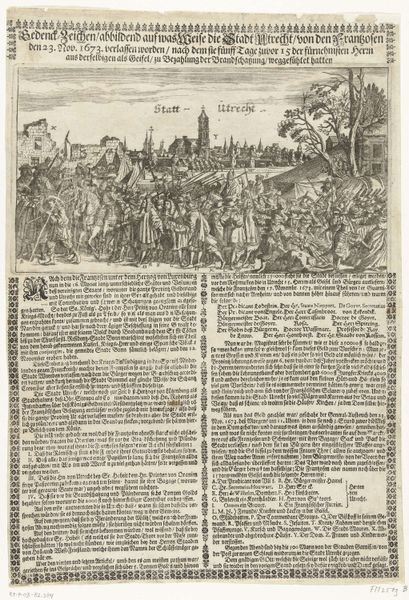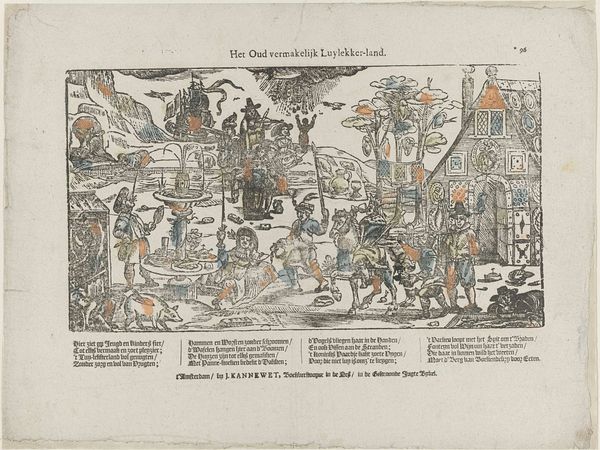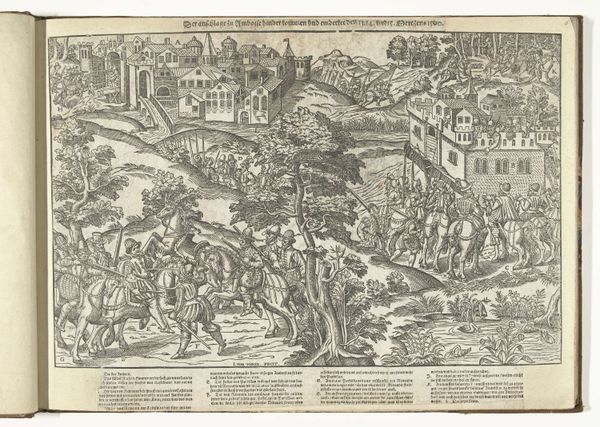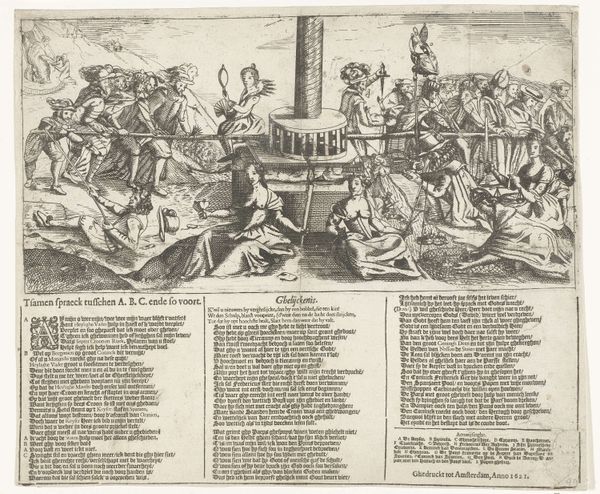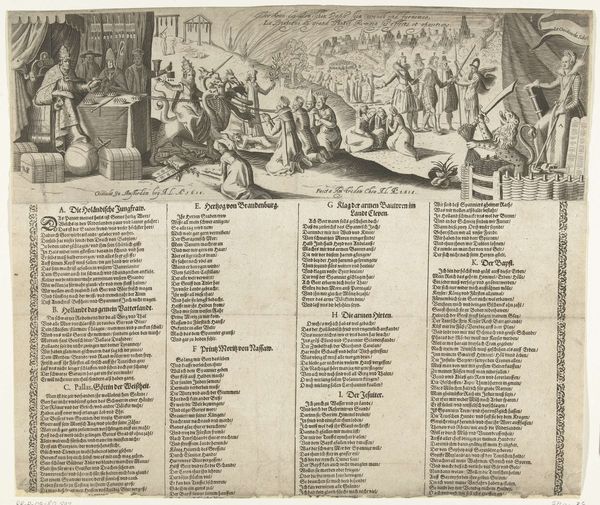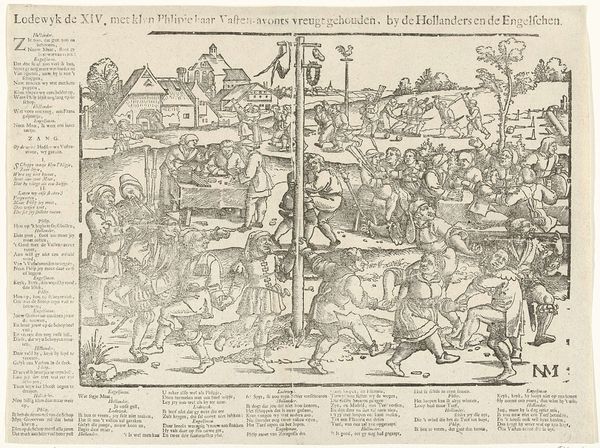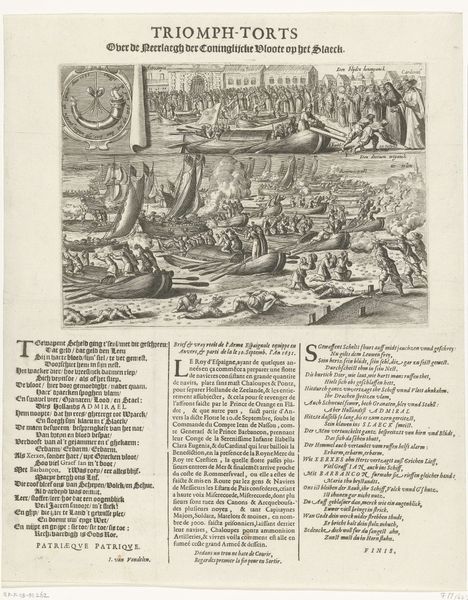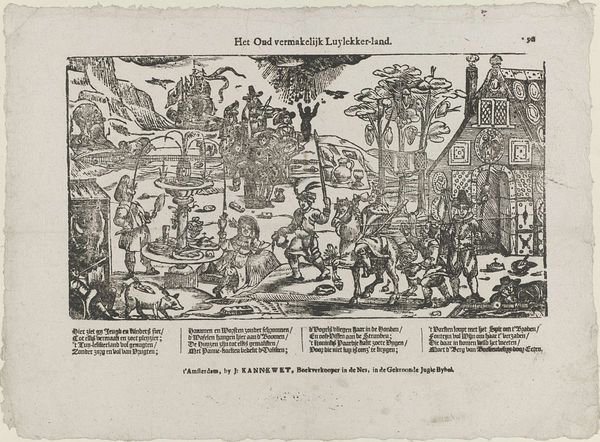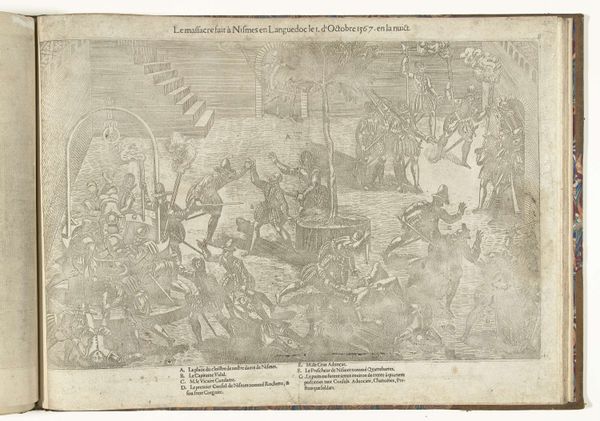
Allegorie op de rol van de de paus in de Gulik-Kleefse kwestie, 1615 1615
0:00
0:00
nicolaesvangeelkercken
Rijksmuseum
print, engraving
#
allegory
#
narrative-art
#
baroque
# print
#
cityscape
#
history-painting
#
engraving
Dimensions: height 337 mm, width 425 mm
Copyright: Rijks Museum: Open Domain
Curator: This engraving, titled "Allegory on the Role of the Pope in the Jülich-Cleves Affair, 1615," was created in 1615 by Nicolaes van Geelkercken and it is currently held at the Rijksmuseum. Editor: It's a fascinatingly busy composition. My immediate sense is of conflicting energies, with war juxtaposed against… is that a leisurely boat ride in the background? Curator: Precisely. This artwork really embodies the tumultuous socio-political atmosphere surrounding the Jülich-Cleves succession crisis. It functions as propaganda, doesn’t it? It criticizes papal involvement in political affairs by illustrating religious figures steering conflict for political gain, which were viewed unfavorably in the Dutch Republic at the time. Editor: I find the printmaking process itself crucial here. Engraving allows for intricate detail but also mass production. Its accessibility meant such potent visual rhetoric could permeate public consciousness in ways other mediums couldn’t. It suggests that public sentiment toward papal interventions may have been rather sensitive and politically volatile. Curator: The allegory plays a key role, as it employs easily recognized symbolism to get across its points. For instance, the Pope’s prominent placement implicates his central, problematic role in the Jülich-Cleves succession, and is not very subtly rendered with that gaze. Editor: I'm interested in the sheer density of figures. Look at those soldiers massed on the left, their spears a forest of implied violence. How do you see that level of detail impacting contemporary viewers? The chaotic elements within its otherwise neat construction suggests a feeling of societal disorder. Curator: I believe its density underscores a period defined by unrest and widespread socio-political manipulation—which can feel so modern, really. This piece highlights not merely historical events but broader criticisms related to authority and influence. Editor: For me, focusing on production brings another dimension. Consider the workshop producing these prints: the skills involved, the economic structures that supported it… These elements are easy to overlook but fundamentally shape our understanding of the image itself. Curator: It's truly a multifaceted artwork. Thank you, I can never deny the potent socio-political role artwork had during this time. Editor: Absolutely, thank you. And seeing art not only as imagery, but as artifact is very useful to considering its place in history.
Comments
No comments
Be the first to comment and join the conversation on the ultimate creative platform.
